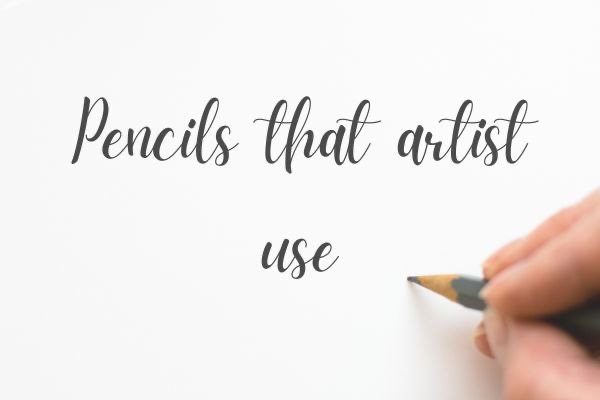Introduction to how to Make Coffee with an Electric Kettle
With just a few simple steps and some basic ingredients, I will guide you how to make coffee with an electric kettle. In this blog post, we’ll break down the process of how to make coffee with an electric kettle and even explore alternative methods for brewing coffee without a coffee maker.If you’re a coffee lover like me, then you know that brewing the perfect cup of joe is essential to starting your day off right.So grab your favorite mug and let’s dive in!

Table of Contents
Essential Tools and Ingredients
When it comes to how to make coffee with an electric kettle, you don’t need fancy equipment or a plethora of ingredients. In fact, all you really need are a few essential tools and basic ingredients to create that perfect cup of joe.
- First and foremost, you’ll obviously need an electric kettle. Look for one that has temperature control settings so you can heat your water to the ideal temperature for coffee brewing. This will ensure that your coffee extraction is optimal and results in a flavorful brew.
- Next up on the list is freshly roasted coffee beans. Opt for whole beans rather than pre-ground ones as they tend to retain their flavor better. Invest in a good grinder if possible, as grinding your own beans just before brewing will make a noticeable difference in taste.
- In addition to the above, having a reliable digital scale is key to achieving consistency in your brews. Measuring both your coffee grounds and water by weight ensures accuracy and helps maintain the proper coffee-to-water ratio.
- Don’t forget about filtered water! The quality of water used greatly affects the taste of your final cup. Using filtered or bottled water eliminates any impurities or off-flavors that may be present in tap water.
With these simple tools – an electric kettle, fresh coffee beans, a grinder (if possible), a digital scale, and filtered water – you’re well-equipped to embark on your journey of making deliciously brewed coffee without needing an actual coffeemaker!
Now that we’ve covered the essentials let’s dive into the step-by-step guide on how exactly to brew coffee using just an electric kettle!
Also check for these articles
Step-by-Step Guide of how to make coffee with an electric kettle
- First, gather your essential tools and ingredients. You’ll need an electric kettle, freshly roasted coffee beans (preferably ground), water, a mug or cup, and any additional flavorings or sweeteners you prefer.
- Next, fill your electric kettle with the desired amount of water. A commonly followed guideline is to utilize approximately one tablespoon of coffee grounds for every six ounces of water.Adjust according to your taste preferences.
- Now it’s time to heat the water in the kettle. Simply connect the device to an electrical outlet and patiently allow the water to heat up until it reaches a boiling point.This may take a few minutes depending on your specific kettle model.
- While waiting for the water to boil, measure out your desired amount of coffee grounds into a separate container or directly into your mug/cup.
- Once the water reaches boiling point, carefully pour it over the coffee grounds in a slow circular motion. Be sure to cover all the grounds evenly with hot water for optimal extraction.
- Allow the coffee to steep for about 3-4 minutes before gently stirring it with a spoon. This will help ensure that all flavors are fully extracted from the grounds.
- After stirring, let the brewed coffee sit undisturbed for another minute so that any remaining sediment can settle at the bottom of your mug/cup.
- Slowly pour or decant your freshly brewed coffee into another clean cup or serving vessel while leaving any sediment behind in order to achieve a smoother taste experience.
There you have it – a simple step-by-step guide on how to make coffee with an electric kettle! Enjoy savoring every sip of this homemade brew without needing fancy equipment like traditional coffeemakers.”
Troubleshooting Tips and Tricks
1. Grind size matters: If your coffee tastes weak or watery, the problem might lie in the grind size of your coffee beans. Try adjusting the grind to a finer setting for a stronger brew or coarser for a milder taste.
2. Water temperature: The ideal water temperature for brewing coffee is between 195-205°F (90-96°C). If your coffee tastes bitter or burnt, it could be due to using water that’s too hot. Letting the boiled water sit for about 30 seconds before pouring can help achieve the optimal temperature.
3. Steep time adjustments: If your coffee comes out too strong or too weak, you can experiment with adjusting the steeping time. A longer steeping time generally results in a stronger flavor while a shorter one yields a milder cup of joe.
4. Paper filters vs metal filters: Using paper filters can result in cleaner-tasting coffee as they trap oils and sediments. However, if you prefer a fuller-bodied brew, try using a metal filter instead.
5. Clean your equipment regularly: Build-up of mineral deposits or old coffee grounds can affect both taste and performance. Make sure to clean your electric kettle and any other equipment thoroughly on a regular basis to maintain optimal brewing conditions.
Exploring Alternative Methods: Brewing Coffee without a Coffee Maker
When you find yourself craving that perfect cup of joe but don’t have a coffee maker on hand, fear not! There are alternative methods to brew your coffee using just an electric kettle and some simple household items. Get ready to embark on a journey of creativity and resourcefulness as we explore different ways to satisfy your caffeine cravings.
- “Cowboy” or “Campfire” method : One popular method is the “Cowboy” or “Campfire” method. All you need is your electric kettle, ground coffee, water, a heat-resistant container (like a mason jar), and some patience. Simply boil water in the kettle, pour it over the ground coffee in the container, let it steep for about four minutes while stirring occasionally, then strain out the grounds using a fine mesh sieve or cheesecloth. Voila! You’ve got yourself a delicious cup of homemade cowboy-style coffee.
- French press method : Another option for brewing without a traditional coffee maker is the French press method. This requires an electric kettle with adjustable temperature settings so you can heat the water to around 195-205°F (90-96°C). Add coarsely ground coffee beans into the French press carafe, pour hot water over them, stir gently, let it steep for four minutes, and finally press down on the plunger slowly to separate the brewed liquid from the grounds.
- Espresso shots : For those who prefer their morning java strong and bold, espresso shots can be achieved even without an espresso machine. Fill your electric kettle with water and heat it up until boiling point. Meanwhile, grind your favorite dark roast beans finely – almost powdered consistency – and pack them tightly into one side of an empty tea bag or use compact filter paper folded into shape like half-moon pockets sealed by stapling them together at each end with only one side open before filling it with grounded beans inside leaving enough space at top for folding purposes later on after sealing up both ends again securing them with staplers.
FAQs
1. Can I use vinegar for descaling my electric kettle?
Yes! Vinegar is an effective and natural way to remove mineral deposits from inside your electric kettle. Simply mix equal parts vinegar and water, fill the kettle with this solution halfway, let it sit overnight, then rinse thoroughly.
2. Are all parts of an electric kettle dishwasher-safe?
Not necessarily. While some models have detachable components that are dishwasher-safe (like filters or lids), others may require handwashing only due to electronic components at their base.
3 . What size capacity should I choose for my household needs?
Electric kettles come in various sizes ranging from 1 liter up to 2 liters or more. Consider factors like how many people will be using it regularly and whether you’ll need extra hot water for cooking purposes before making your decision.
4.Is it safe to keep my electric kettle plugged in constantly?
It’s generally not advisable to leave your electric kettle plugged in when you’re not using it. This is due to a few reasons that we’ll explore. Firstly, keeping it plugged in can lead to unnecessary energy consumption, which adds to your electricity bill and isn’t environmentally friendly. Secondly, leaving it constantly connected to a power source may pose potential hazards, such as overheating or short-circuiting, which can be dangerous for both you and your home. Therefore, it’s a good practice to unplug your electric kettle when you’re done using it to ensure both energy efficiency and safety.
Final Thoughts and Recommendations
Throughout this article, we’ve delved into the various techniques of how to make coffee with an electric kettle and explored alternative methods for how to brew coffee without coffee maker. These approaches can be incredibly useful when you’re without a coffee maker or simply prefer a more hands-on approach.
Using an electric kettle to brew coffee offers not only convenience but also the ability to create a delightful cup of joe in just a few simple steps. By equipping yourself with the necessary tools and ingredients like freshly ground beans and filtered water, you can relish your favorite brew at any time and in any place.
However, it’s important to keep in mind that these methods may require some experimentation before discovering your perfect blend. The key is to try different ratios of coffee grounds to water and varying brewing times until you find the taste that suits your preferences.
Furthermore, while these alternative brewing methods excel at serving individuals or small groups, they may not be suitable for larger batches of coffee. If you often host gatherings or events, it might be worth considering investing in a quality drip coffee maker or French press.
Don’t overlook the significance of regular cleaning and maintenance for your electric kettle. A clean kettle ensures that there are no lingering flavors from previous uses that could compromise the taste of your freshly brewed coffee.
So whether you’re constantly on-the-go or seeking an immersive brewing experience at home, utilizing an electric kettle opens up endless possibilities for savoring that perfect cup of java. Take the plunge and explore new flavors and techniques, letting your creativity flow!
Remember: Coffee-making is both an art form and a science, so embrace the process! Happy brewing!


